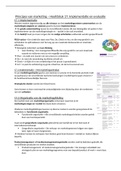Samenvatting
Summary MCC Hoorcolleges, aantek. artikelen, aantek. ppt slides
Marketing Communication and the Consumer. Aantekeningen van de hoorcolleges, artikelen en ppt slides. Voornamelijk in het Engels, soms zinnen in het Nederlands ertussen.
[Meer zien]






